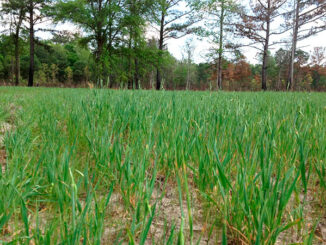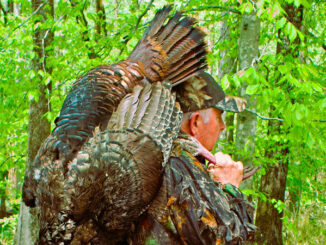
Waterfowl hunters need to adjust their calling, decoy spreads and locations as January arrives and the end of the season approaches. Here’s how two guides face late-season challenges.
Waterfowl hunting is one of the most-popular outdoor activities in the country, and January is the last month that duck hunters can sit in brush-covered blinds sending high-dollar shotgun loads skyward at winged bounty. But with only a few weeks of the season remaining, ducks aren’t as easy to lure into a decoy spread as when they first arrived; hunters must pull out all the stops to return to the homestead with a limit in hand.
North Carolina and South Carolina are littered with high-quality wintering habitat for ducks and geese. Not only do farmers and landowners with waterfowl impoundments have groceries available for incoming flocks, the two states have thousands of acres of natural habitat teeming with energy rich forage for the large portion of the migrating flocks heading down the Eastern Flyway.
While ducks won’t think twice about picking up and flying to greener pastures 100 miles away when food reserves dry up, the majority of the migration is over by the end of December. Ducks using the local bays and swamps are going to stay around for the rest of the season unless something or someone gives them a reason to relocate.
Food is critical for ducks during the winter. Migration is a major drain since ducks burn 12 times more energy flying than anything else they do. A duck can burn more than a million calories between Canada and the Southeast, making local food availability in wintering areas extremely important for ducks and hunters. Ducks will gobble up as much food as they can to restore their fat reserves after they arrive, and after they have finished that task, they go into a maintenance mode, with less emphasis on feeding and more time spent resting away from danger zones.
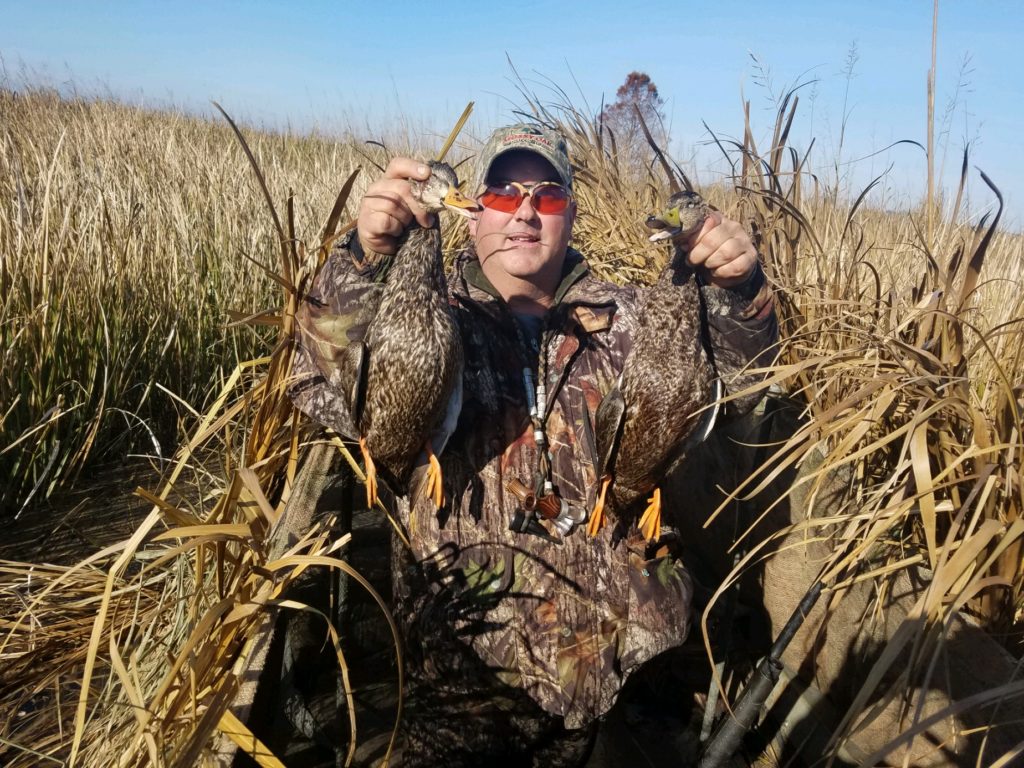
Activity will increase or decrease with the change in the weather. A bluebird day in January when the mercury spikes into the 70s may keep duck flights at their lowest ebb, but when a front shows up with wind and frozen precipitation, ducks will be actively looking for food.
Matt Bellamy of Captain Matt’s Guide Service in Pawley’s Island, S.C., lives and breathes duck hunting. From the Santee Delta to the marshes around Georgetown’s Winyah Bay, Bellamy spends more time on the water with a shotgun in hand than anywhere else. On those warm, bluebird days of January, it can be challenging.
“Some days I don’t even bother going,” said Bellamy (843-568-8203). “In flooded timber of Arkansas, you need sunshine to bring the birds in, but around here, we need wind and weather to push them out of impoundments.”
The area around Georgetown is littered with acres of impoundments filled with native vegetation or massive crops from planted agriculture options. But luckily, the impoundments are hunted so frequently that ducks are flushed out onto the main bodies of water in the region.
Hunting on big water is where hunters can take a limit quickly in January, whether ducks are being flushed out of impoundments or are just looking for the company of a big flock for protection.
Jennings Rose of North State Guide Service hunts out of Oriental, N.C., and spends his days chasing ducks from the slews off the Neuse River to the big water of the western Pamlico Sound. In 15 years of hunting the area, Rose knows where to go and what to do when ducks respond to pressure as the season wanes.
“We change tactics in the later part of the season because ducks get educated,” said Rose (910-231-7741). “We change up our decoy spread and slide off the bank. Birds start getting bank shy.”
Especially during the early season, hunters are predominantly hunting along the shorelines where there is abundant food and cover. Pressure will send ducks into open water where they raft up and avoid danger, but they can also feed over clam and mussel beds in deeper waters.
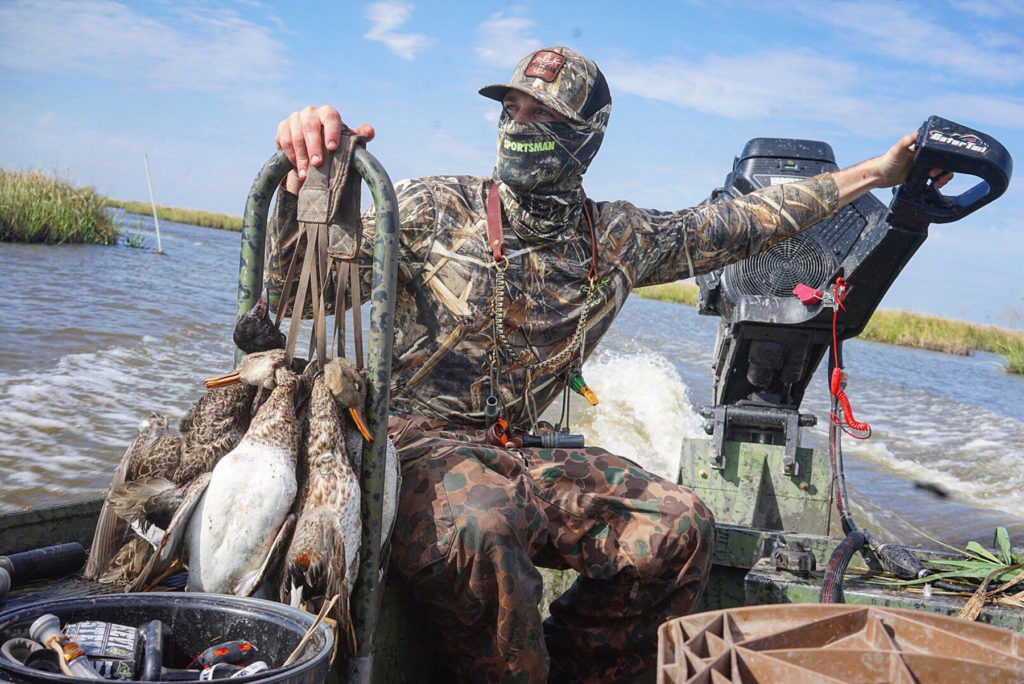
“We have three boats, and at least one of us will be out scouting, looking to see where the birds are. They will move around to different areas often and we have to keep track of them to keep our people in the action,” Rose said.
When he finds them, Rose will pull significantly off the banks and use larger decoy spreads to mimic the natural flocks found on scouting trips.
“The divers on the sound really raft up into bigger groups, feeding on the clam beds out there, and we mimic these large groups with larger decoy spreads. We will use between 60 and 120 decoys. If you can come close to three figures on decoys, you are doing pretty good,” he said.
North Carolina’s Pamlico Sound is close to being the largest body of water on the east coast. In that massive expanse of water, a large decoy spread is critical to being seen by birds cruising around on the marsh.
When moving off the bank, the water gets deeper, and that makes Rose switch to a deep-water setup. He starts using large strings of decoys on gang rigs, and he needs to be efficient deploying and recovering them. He uses a unique setup to get his decoys out in a hurry.
“We use gang rigs of decoys hooked on heavier line. We add loops to gang lines and cinch decoys to loops with zip ties so that they shoot right out of the barrel,” Rose said.
Not only do ducks get accustomed to danger along the shorelines, hunter tactics can alert weary flocks.
Bellamy changes his tactics to keep the ducks at ease.
“I don’t call as much,” he said. “By this time of year, ducks have heard about every mallard call there is. I do more peeping on whistles than with a standard mallard call. You just want to get their attention with the call, and then I let the decoy spread do the rest.”
In addition to less calling, Bellamy wants more motion in his decoy spread. Movement will give an incoming flight more confidence, but motion devices may not always produce good results.
“Mojo decoys with spinning wings can be wonderful, but most of these ducks learned about these in Canada before they came to South Carolina,” Bellamy said. “If they aren’t working and (are) flaring off birds, take them down. I do like movement on the water, though. I will still use a jerk string to keep the decoys moving around and looking as natural as possible.”
Even though ducks have brains the size of a marble, they learn how to survive, and no matter how much food is available in a particular area, ducks will avoid the Vegas-style buffets when hunting pressure rises around them. For the best results, adopt a larger spread, call less, and make every shot count to prevent a college-level education for ducks.
Make informed decoy choices
It only takes the bare minimum of a shotgun, non-toxic shot, a license and a duck stamp, and some skilled shooting to take home a mess of ducks to the dinner table.
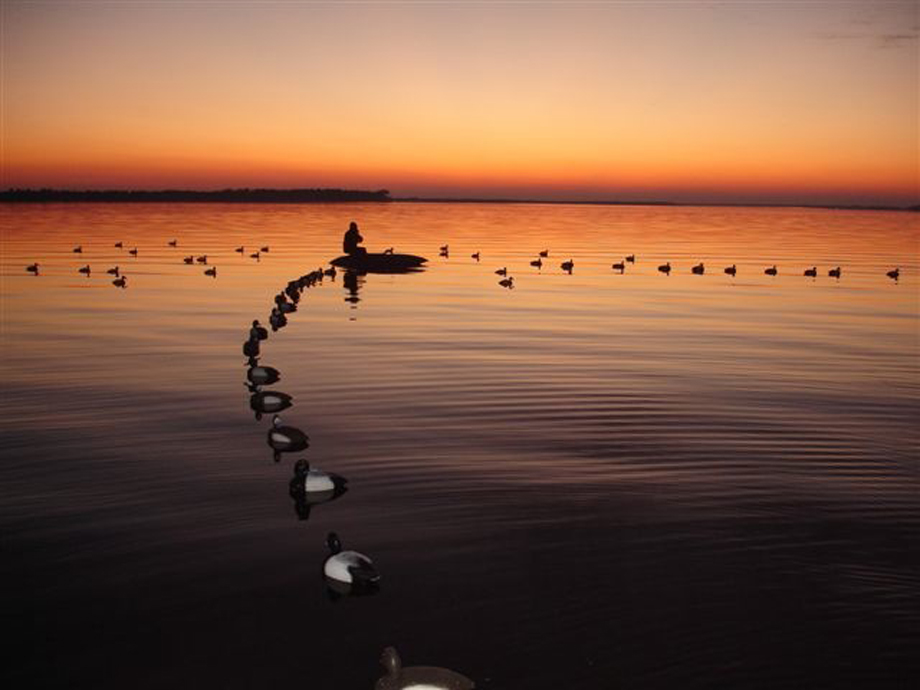
But, the bare minimum can only suffice in a swamp or for hunters who know exactly where to stand on a passing flock. More likely, hunters will have lots of money invested in decoys, calls and other high-tech equipment. And for some duck species, the color of decoys can make a huge difference between shooting and listening to crickets.
Decoy manufacturers make options to match every species that use the four North American flyways. While gadwalls, mallards and widgeon will have no problems decoying into a mixed spread of puddle ducks or even a set of white-backed bluebills, sea ducks are more keyed in on decoys that look similar to their own God-given paint jobs.
Guide Jennings Rose predominantly hunts the big waters of the North Carolina’s Pamlico Sound in his scissor blind. While he takes his fair share of black ducks, pintails and widgeon nearshore, he concentrates on the bigger rafts of divers and sea ducks in January.
“We shoot more puddle ducks early in November and December. In the late season, we concentrate on divers,” Rose said. “When you get used to hunting that far offshore, you get a good showing of sea ducks, too.”
Sea ducks can be found along the ocean front all the way to the larger sounds like the Pamlico and the Albemarle. When he finds a big raft of sea ducks, he changes his entire decoy spread.
“We use long strings of all-black decoys to mimic scoters. Sea ducks will not decoy into white or spreads of diver decoys,” he said.
In the Carolinas, black scoters, white-winged scoters, and surf scoters are the most-common sea ducks. From above, they appear to have all-black blacks, and they like to sit on the water with their own kind. In addition, some goldeneyes and eiders will show up on rare occasions.
A time to refresh: spruce up your decoys and blinds
By January, ducks have earned masters–level educations from duck hunters scattered from Canada to the southern states. They have learned to pick out deficiencies in a duck hunter’s setup to survive another day in the wild.
To get these little fliers into range, hunters’ camouflage and decoy spreads must be immaculate.
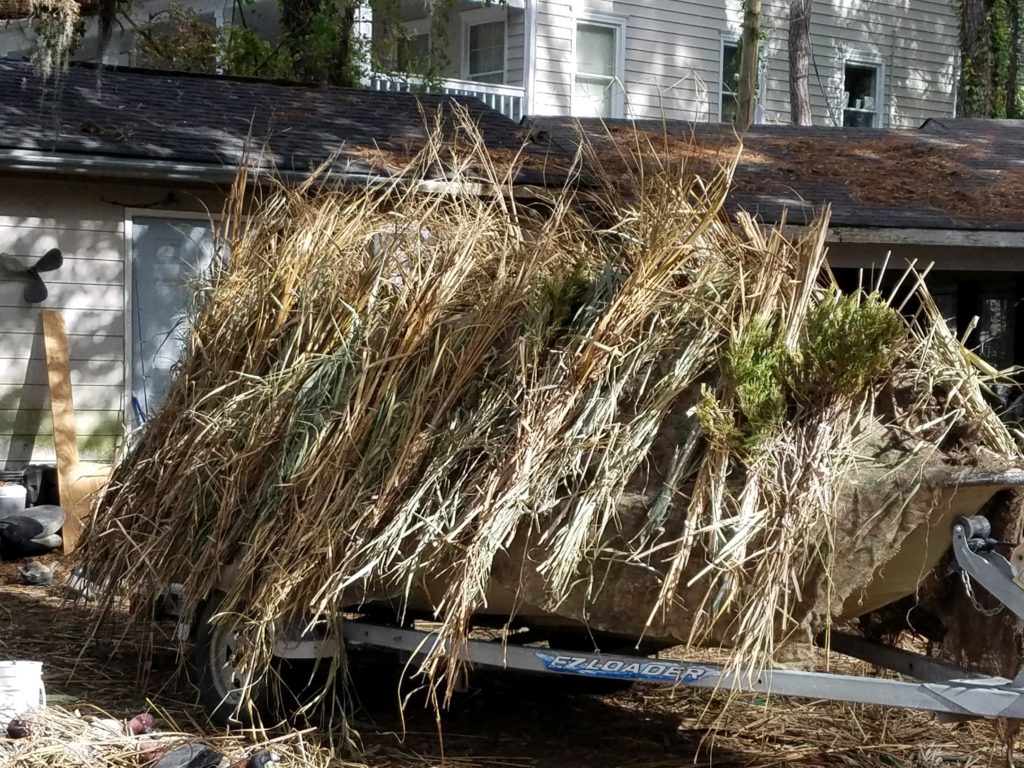
Guide Matt Bellamy concentrates first on keeping ducks in the dark.
“My No. 1 rule is concealment, and movement can be a terrible problem,” Bellamy said. “I have a teepee blind, and there is nothing exposed on my boat. It is completely camouflaged with natural grass and other stuff from the surroundings where I hunt.”
“I re-grass my blind midway through the season to make sure I am completely concealed.”
Bellamy hunts mostly in brackish waters and close to the saltwater/freshwater dividing line. In these areas, he makes sure he uses native cover to make his boat blend in. But if he is hunting in areas with abundant pine trees, he would change his blind setup with pine saplings.
In addition to blind rehab, Bellamy also invests time in his decoys. After dragging his decoys into and out of his boat 30 or 40 times, his decoys get beat to death, and the paint jobs will often take a real beating.
“Ducks are in full plumage this time of year, and decoys need to be immaculate. On bluebird days when ducks aren’t flying, I use that time to re-paint or touch up decoys to make sure there is nothing ducks will reject on that final flight into shot gun range,” he said.

